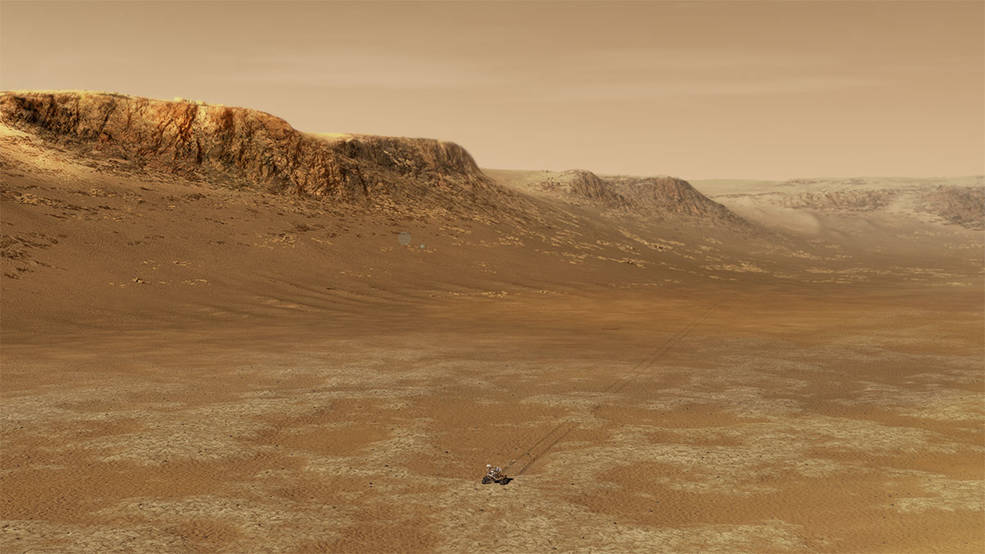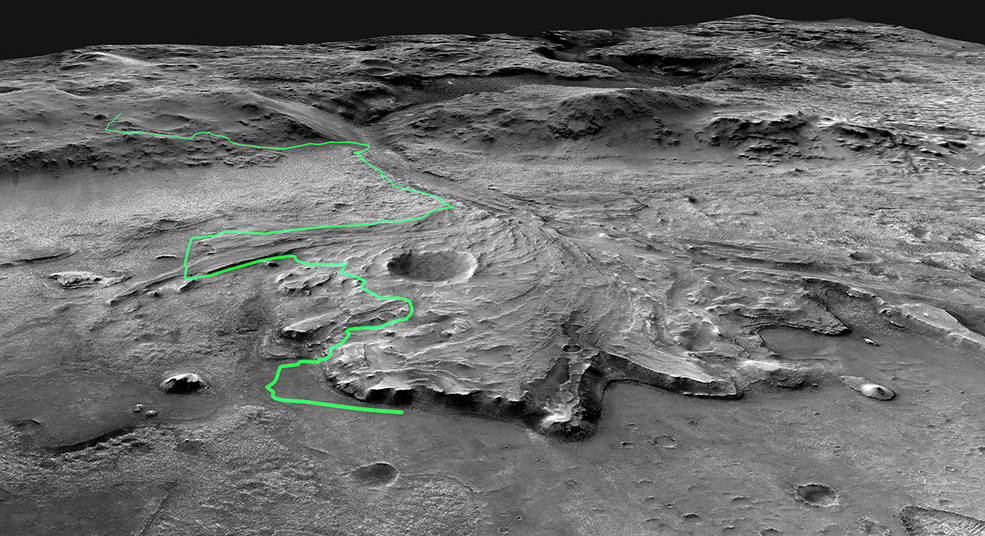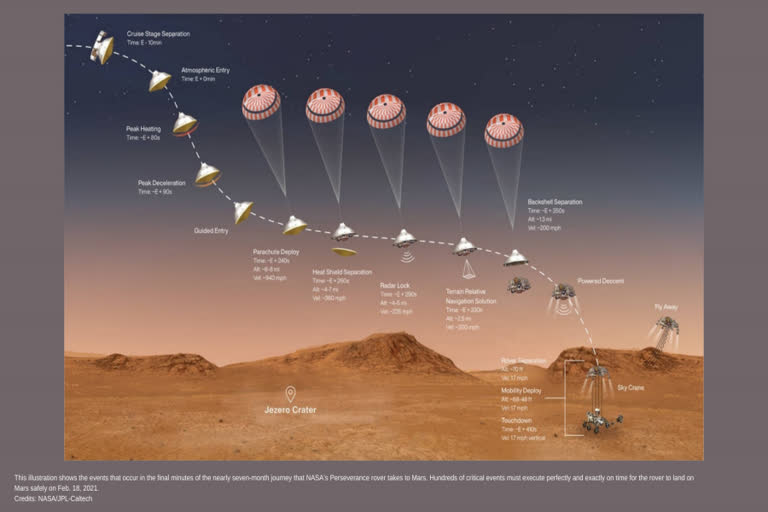Washington: NASA's Mars 2020 Perseverance rover mission is set to complete a 470.8-million-kilometer next month as it is scheduled to land on Mars on February 18.
Launched on July 30 last year, the rover is currently closing that distance at 2.5 kilometers per second, NASA said.
NASA has been exploring Mars since Mariner 4 performed a flyby in July of 1965, with two more flybys, seven successful orbiters, and eight landers since then,” said Thomas Zurbuchen, associate administrator for NASA’s Science Mission Directorate at the agency’s headquarters in Washington.

He also added that “Perseverance, which was built from the collective knowledge gleaned from such trailblazers, has the opportunity to not only expand our knowledge of the Red Planet but to investigate one of the most important and exciting questions of humanity about the origin of life both on Earth and also on other planets.”
Once at the top of the Red Planet's atmosphere, an action-packed seven minutes of descent awaits -- complete with temperatures equivalent to the surface of the Sun, supersonic parachute inflation, and the first-ever autonomous guided landing on Mars.
Only then can the rover search Jezero Crater for signs of ancient life and collect samples that will eventually be returned to Earth. Jezero Crater is believed to be the perfect place to search for signs of ancient microbial life.

Perseverance’s sophisticated science instruments will not only help in the hunt for fossilized microbial life, but also expand our knowledge of Martian geology and its past, present, and future,” said Ken Farley, project scientist for Mars 2020, from Caltech in Pasadena, California. “Our science team has been busy planning how best to work with what we anticipate will be a firehose of cutting-edge data. That’s the kind of ‘problem’ we are looking forward to.”
Billions of years ago, the now-bone-dry 45-kilometre-wide basin was home to an actively-forming river delta and lake filled with water.
The rock and regolith (broken rock and dust) that Perseverance's Sample Caching System collects from Jezero could help answer fundamental questions about the existence of life beyond Earth.
The Mars 2020 mission is part of a larger programme that includes missions to the Moon as a way to prepare for human exploration of the Red Planet.
Also Read: After aborted SLS hot-fire test, NASA to try again
(Inputs from IANS+ NASA)



